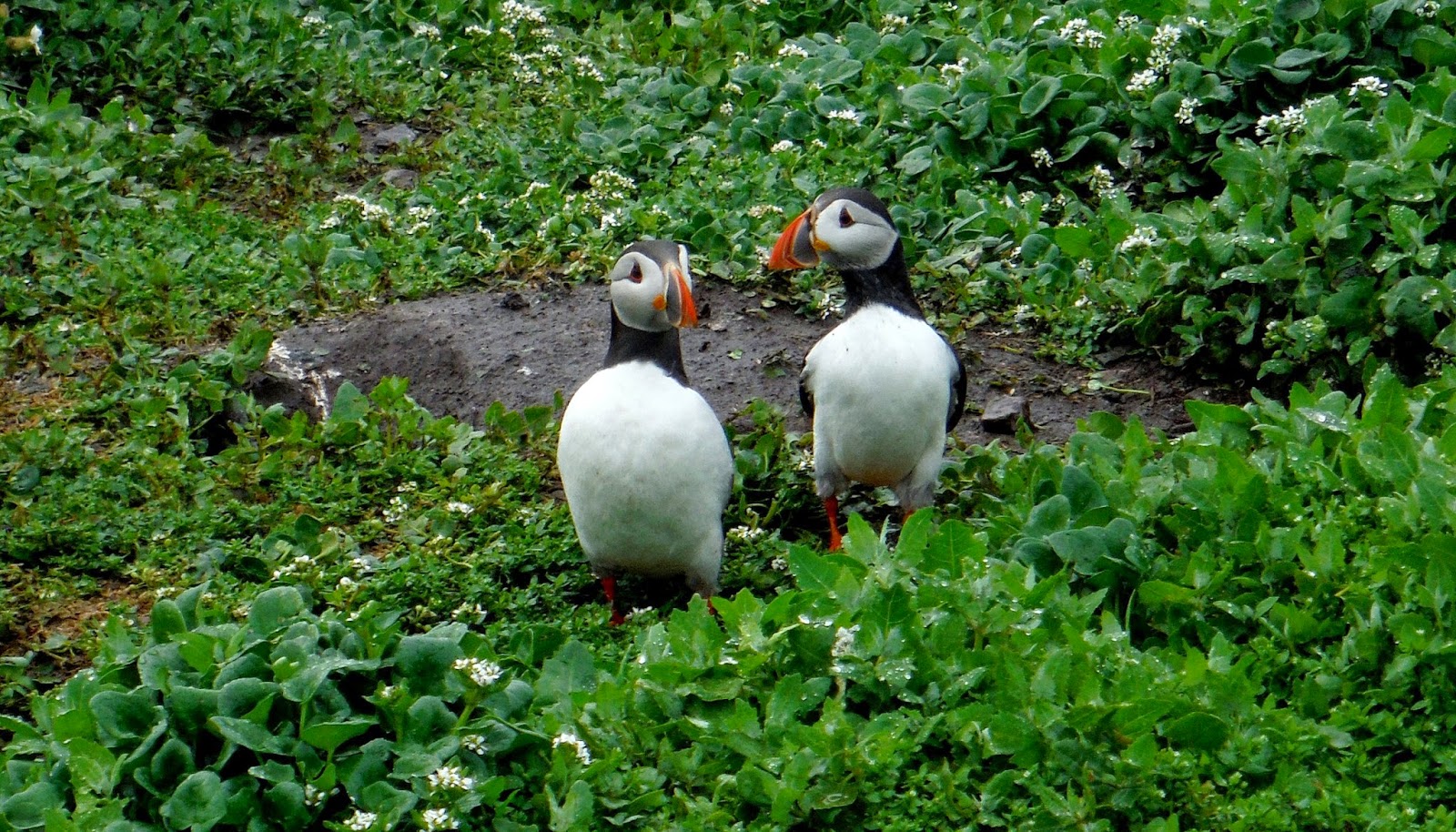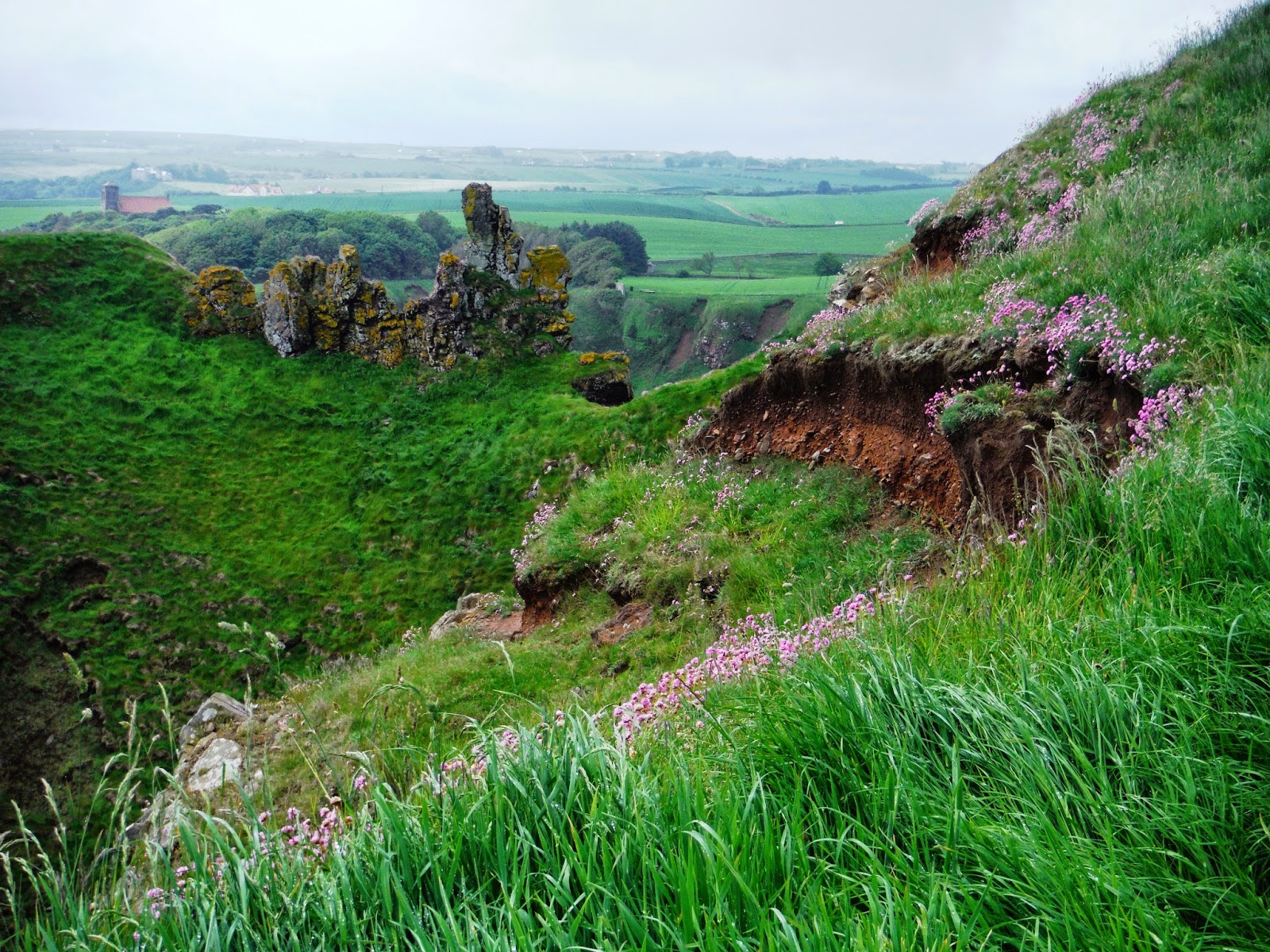As business grows there is always more to do and I've realised, now that I have
Facebook and @StartBirding on Twitter, that I've not been updating my blog as often as I used to.
I've just got back from leading my annual trip to Northumberland, land of Tommy Noddys and Cuddy ducks, so I thought I'd make this the subject of this month's blog and take you on a journey around this wonderful county. Keep reading to find out what these names mean.
My companions first started coming to classes as early as 2005 when they began learning about birds at (what was then) Park Lane College in Leeds, now
Leeds City College. We now meet in a conservatory, belonging to one member of the group, during the winter months. Each year in June we travel to Northumberland and vary the mix of birdwatching sites from year to year.
This year, with full winter gear in tow due to a terrible weather forecast, we headed for Seahouses on our first day to take a trip to the Farne Islands. The sea was flat calm and the weather was mild but heavy downpours were expected. This kept the crowds down and we almost had the boat to ourselves.
 |
| Guillemots surround us as we make our way around the Farne Islands |
We were taken around the islands to look at seals, puffins (known locally as Tommy Noddys), guillemots, razorbills, kittiwakes, shags and eiders (also known as Cuddy Ducks). Gannets could be seen flying to and fro from Bass Rock, which is just off the coast of North Berwick, and we were able to age the individual birds by looking at their feather patterns.
 |
| Grey seals can be seen in large groups off the coast of Northumberland |
We landed on Inner Farne, the closest island to Seahouses, which belongs to the National Trust. Sandwich terns nest on the shore here and, if you look very closely, you can find a ringed plover nesting among the pebbles.
 |
| ringed plover can be found nesting on pebble beaches |
It was then time to put on our hats and face the needle sharp beaks of the Arctic terns. I'm certain that these birds queue up for the best places to attack every visitor that arrives on the island and I'm sure that they are getting more aggressive as each year goes by. They nest along side the boardwalk and fly up to peck you as soon as you get close to the nest. You know that you're going to be targeted when you hear their cackling call and very soon afterwards you'll feel the thud on your head. If you stand still, you can get them to settle on you and pose for a photo.
 |
| Arctic tern attack on Inner Farne |
 |
| If you're lucky you can get them to settle on your head |
Moving further along the boardwalk, we found the common tern nesting sites and were able to compare them to the Arctics. Arctic terns have a deep red bill and very short, deep red legs while common terns have a more orange-red bill with a black tip and slightly longer orange-red legs. These species are difficult to distinguish in flight so birdwatchers often refer to them as 'comic' terns (common or Arctic). The length of the bird's tails, calls, flight and feeding patterns and translucency of the wing are also used as clues to identification.
 |
| Common terns - look for the black tip to their orange-red beaks |
 |
| Sandwich terns and puffins |
Further along the path, the puffins start to appear in small groups and another Sandwich tern colony can usually be found at the edge of the puffin burrows amongst the clumps of sorrel and campion. From time to time an
eery groaning noise can be heard from deep inside a burrow. This is a puffin on the nest.
 |
| Puffin heading towards a burrow |
As we approached the lighthouse we turned left towards the steep cliff and watched puffins, guillemots, razorbills, kittiwakes and shag on their nests. We looked for bridled guillemots, a mutation of the guillemot that shows a white spectacle around the eye. I think around 4% of the guillemots in this area show this form.
 |
| Bridled and normal guillemot |
 |
| Shag and chick on Inner Farne |
 |
| Kittiwake on eggs |
 |
| Puffins gathering on the cliffs |
All around there were sounds of seabirds. Walking back along the boardwalk, more puffins loitered around their burrows, hounded by gulls. In contrast to the clown-like puffins, eider females were barely noticeable as they sat motionless among the vegetation.
 |
| Puffins at their burrows |
 |
| Female eider on her nest |
The Arctic terns gave us a good send off as we made our way back to the boat and we headed off back to Seahouses watching hundreds of seabirds busily searching for food to take back to their chicks. Read more about the
Farne Islands and the puffins on the National Trust website.
On our second day, after a pre-breakfast walk, we travelled to St Abb's Head in Scotland to have a walk along a beautiful stretch of coastline. Here we saw farmland birds, rock pipit and more nesting seabirds including fulmar.
 |
| St Abb's Head |
 |
| Pied wagtail |
 |
| Yellowhammer |
We then travelled south again to Lindisfarne or Holy Island. This island is accessible by car until high tide. Here we saw bar-tailed godwit, ringed plover and rock pipit in the harbour and masses of eider, common scoter and seals on the sandbars beyond.
 |
| Lindisfarne harbour |
 |
| spot the rock pipit chick |
Our pre-breakfast walk on the last day gave us some entertainment in the form of 3 hares running around the lane. We watched them for a while before they galloped back into the fields.
 |
| 3 hares on the country lane |
After packing, we set off south for Druridge Bay visiting Cresswell Ponds and Druridge Pools. We found little gull, avocet, black-tailed godwit and stonechat around the pools and were treated to a fantastic display from harbour porpoises and dolphins (species unknown) as we looked out to sea from the sand dunes. We also saw a red-throated diver in breeding plumage.
 |
| male stonechat with caterpillar |
 |
| a very poor photo of a couple of spoonbills at Druridge Pools |
Finding two spoonbills at Druridge Pools was a perfect end to a perfect 3 days - thanks to my group for their company and to whoever was responsible for keeping the rain away until we got home.
If you'd like to learn more about my 3 day trips then please contact me for more information.


















































